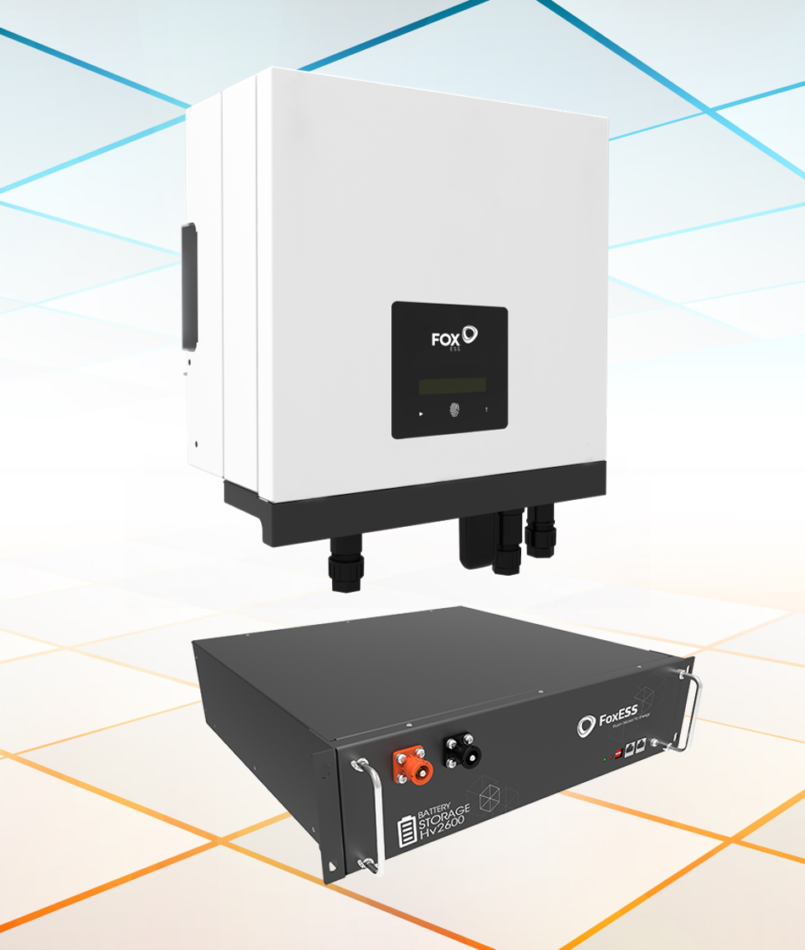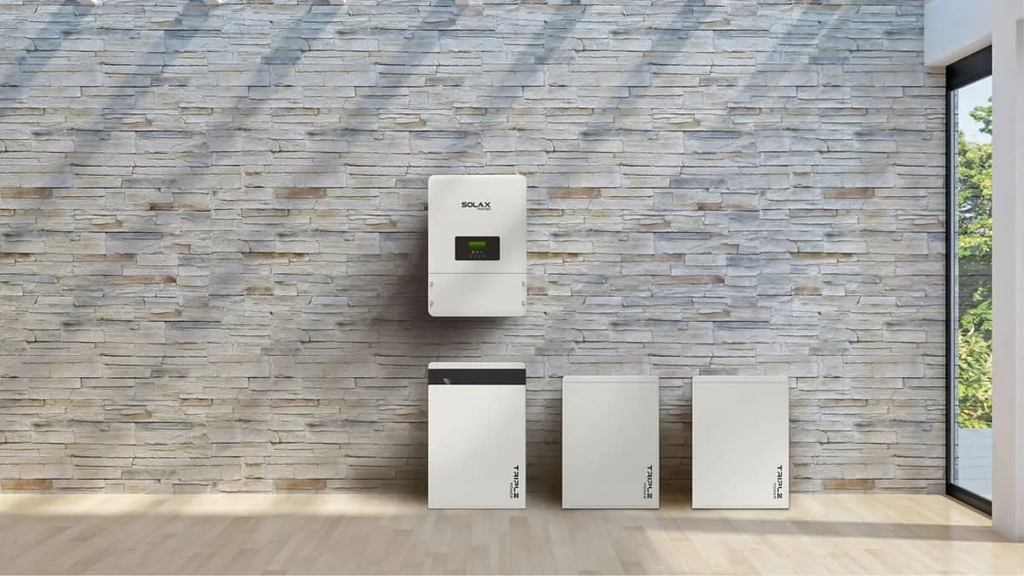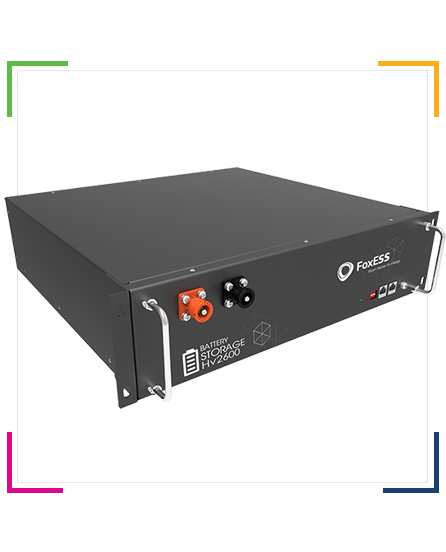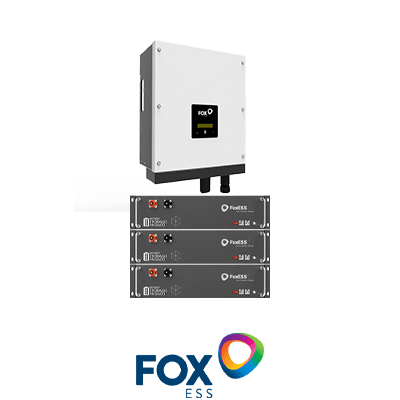

One of the challenges facing photovoltaics is how to store energy. In the currently most popular on-grid system, surplus electricity produced is returned to the grid, which is convenient, but has several drawbacks. Not only does it cause a considerable loss of energy, but it also leads to local overloading of the transmission grid. The solution to this issue is energy storage for photovoltaics, i.e. efficient and capacious batteries into which unused energy goes.
The use of energy storage is becoming increasingly important. The number of micro photovoltaic systems is increasing at an almost exponential rate. While in the case of a few PV installations the surplus could be spread over many households, in the high density of domestic solar power plants distributing the generated electricity during peak hours can be a problem. For this reason, the Ministry of Climate and Environment has already announced changes to the Mój Prąd 4.0 subsidy that place more emphasis on the use of home energy storage.
The primary purpose of using energy storage is to increase self-consumption. In the current net-metering system, the prosumer who generates electricity from the sun can feed surplus electricity into the grid and then collect it at a later time. This way, it is possible to make up for energy shortages at night, during the winter or during unfavourable weather conditions. However, it involves a commission from the distributor, which is 20% of the energy returned, or 30% if the capacity of the micro photovoltaic system exceeds 10 kWp.

Such a solution generates losses, but relieves investors from the need to purchase energy storage facilities. Hence, the vast majority of PV micro-systems built in Poland are on-grid systems, closely cooperating with the grid. They have no possibility to store the produced energy and the grid plays the role of a virtual warehouse. A shortcoming of the system is grid overloading during exceptionally sunny days, when the momentary production is the highest. This can lead locally to an increase in grid voltage and even to the inverters being temporarily disconnected from the grid.
The photovoltaic system’s own energy storage will ensure that the energy not used at any given time will feed into capacious batteries, which will provide electricity in moments of shortage. The advantage of a hybrid photovoltaic system is also independence from electricity supply. In the case of a classic on-grid installation, during a failure of the transmission network, the house is cut off from the electricity anyway, and the photovoltaics does not provide any energy. This happens even on sunny days, when the generated yield would be sufficient to satisfy the entire energy demand of the building. Photovoltaics with energy storage solve this problem, because during a power failure, all the energy comes from the photovoltaic cells and pre-charged batteries.
An important factor influencing the benefits of installing energy storage is the change in RES regulations. On 1 April 2022, discount billing will cease to apply and will be replaced by net-billing. This is a form in which surpluses are resold to the distributor according to current wholesale prices. The energy produced cannot therefore be taken back at a later date – the prosumer must purchase it at the market price. In practice, the purchase price of electricity is twice as high as the resale price, so treating the grid as a virtual energy store becomes uneconomic. This would mean that only about 50% of the energy produced could be collected.

It is worth noting that for installations built and reported before 1 April 2022, the billing system remains unchanged for a long time to come. Existing users of photovoltaics are guaranteed to benefit from the discount system for 15 years after the installation is connected to the grid. Prosumers who decide to install after 31 March can, however, significantly increase the profitability of their investment by expanding their photovoltaics with energy storage. Then, surplus electricity will not be resold, but stored in batteries. Thanks to this, the household will later use 100% of the free energy from the sun. Of course, this does not change the billing rules and the prosumer can continue to sell energy after the storage capacity is full. He can also buy it when the batteries are depleted. This is a key advantage of a hybrid system over off-grid photovoltaics, which rely entirely on energy banks.
There are many ways to store energy from renewable sources. Energy produced by photovoltaic panels, hydroelectric power plants or wind farms can be accumulated in pumped storage power plants, mines converted into pressure tanks or at the bottom of water bodies. These forms of energy storage, however, concern large power plants and correspond to the industrial scale. In the household, the energy produced is mainly stored in heat (hot water) and also in batteries, i.e. energy storage.
Photovoltaic batteries work in conjunction with a hybrid inverter that channels unused electricity from the sun into them. The storage units can operate in different modes, such as backup or support to reduce energy consumption from the grid. Different types of cells are used in batteries, e.g. iron, lead-acid or lithium-ion, which are known for example from smartphones, laptops or tablets. However, the best choice for photovoltaics are lithium-iron-phosphate (LiFePO4) cells. They are characterised by high durability, allow deep discharging and do not have a memory effect reducing efficiency. In addition, they provide up to 6-8 thousand charging cycles without significant capacity loss.
LiFePO4 batteries also have low self-discharge values, which means that they can store energy for longer periods. They operate over a wide temperature range, from -10 to 45 degrees Celsius, which is why they are also used on boats or in campers. They are made from lightweight metals and are free of toxic chemicals, so they are safe for the health of household members and for the environment. This also makes them easy to recycle.
The choice of energy storage for a photovoltaic system should not be dictated solely by price. High-power cells must have certificates and approvals attesting to the safety and durability of their parameters, such as EN50549, NCRFG or 62109. Each energy storage unit must also have factory protection to prevent overheating of the battery and electric shock. High safety standards usually go hand in hand with reliability, which is why leading energy storage manufacturers offer a 10-year warranty. A short warranty on photovoltaic batteries should be a warning sign. It is also worth distinguishing between a warranty for the operation of the device and for maintaining high efficiency.

The energy requirements of the building must also be taken into account when selecting your own energy storage for photovoltaics. It does not make economic sense to buy batteries with too much capacity, because in most cases, only a small percentage of the capacity will be used. On the other hand, too little energy storage will not provide energy for long and may force you to save electricity. It is worth noting that it is not only the capacity of the battery that matters, but also the power delivered. While a single-phase installation consumes around 7.5 kW, three-phase installations can consume up to 15 kW at any one time.
The size of the energy storage facility is usually selected on the basis of the total output of the most important appliances, such as refrigerator, electric cooker, heating circulation pump, heat pump, router, lighting, security systems, etc. A well-chosen energy storage for photovoltaics should also enable the free use of household appliances, such as a computer, television, washing machine or dishwasher. If the storage is to act as a backup in case of power cuts, it is worth choosing such a power which will provide energy for several hours. However, if the storage facility is only to support the installation in times of shortage, it is a good idea to install batteries with a capacity of 30 % of the average annual energy consumption.
The most important question regarding energy storage remains – the price. The cost of installing batteries for photovoltaics that accumulate electricity from RES is relatively high and amounts to approximately 2-5 thousand PLN per 1 kWh. The purchase of storage with a capacity of 10 kWh, which guarantees power supply for several hours, is an expense of about 20-40 thousand PLN net, depending on the type of cells. Additionally, the cost of replacing the inverter with a hybrid one or adjusting the installation to handle batteries should be added. Some storage units have a built-in inverter, which solves this problem.
Fortunately, the costs of an installation with energy storage do not have to be covered 100% by the investor. The purchase and installation of components can be subsidised by the Mój Prąd programme. The fourth edition of the RES installation subsidy programme is distinguished by its focus on energy self-consumption, which encourages the purchase of energy storage systems. This is also the best time to buy heat storage systems, electric car charging points or smart home electricity control systems.
According to the announcement of the National Fund for Environmental Protection and Water Management, the purchase of a photovoltaic system with energy storage will be rewarded, and the subsidy may amount to 50% of eligible costs. The amount of the subsidy for energy storage in 2022 is not yet known, but it will certainly be accepted more favourably than, for example, interest-free loans. If the subsidy amounts to approx. 25-50% of the costs, enriching the installation with energy storage will become very beneficial, especially in view of rising electricity prices. The government subsidies will cover not only the equipment itself, but also the system design, preparation of the application, installation and technological consultancy.
Apart from the Mój Prąd 4.0 programme, other available subsidies for the purchase of energy storages include the Modernisation Fund and Agroenergia, addressed to farmers. The installation of energy storage facilities in rural areas is particularly important, and the reason for this is the poor state of the power grid.
Photovoltaics with energy storage is a worthwhile decision now. It is an investment which not only makes you independent of high and constantly rising electricity prices, but also protects you against blackouts. Blackouts are an increasingly real scenario, which will severely damage households dependent on electricity. Heat pump heated homes should have blackout protection. This is especially true for properties that lie in an area served by an outdated transmission network that is unsuited to modern requirements. It is also important to remember that villages and suburbs tend to have a lower priority for repairs, so outages can last up to several hours. To choose the optimal battery capacity and analyse scenarios for your home, contact your Solmix advisor – energy storage for photovoltaics wholesaler.
Our offer
Useful
Shop